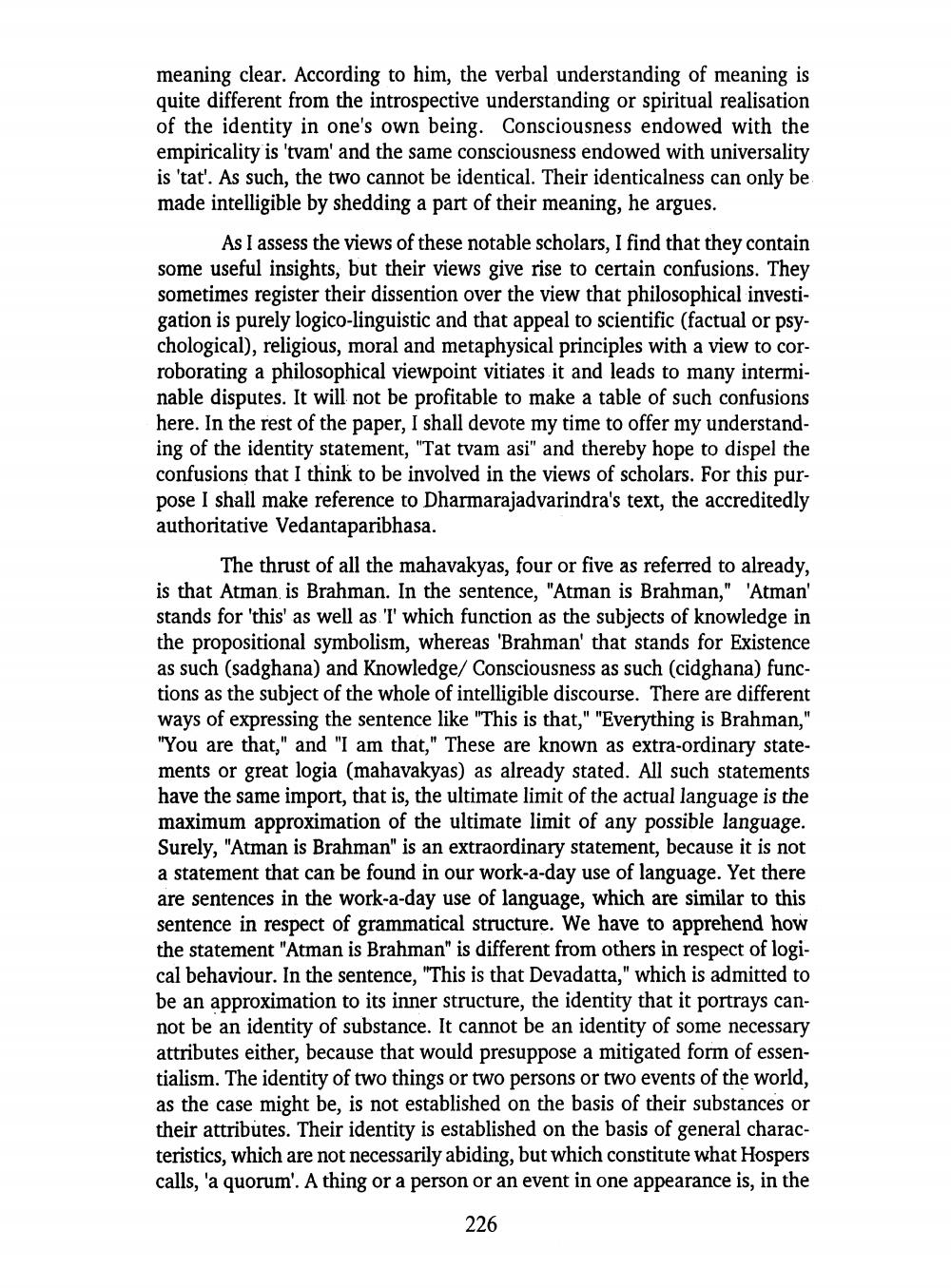________________
meaning clear. According to him, the verbal understanding of meaning is quite different from the introspective understanding or spiritual realisation of the identity in one's own being. Consciousness endowed with the empiricality is 'tvam' and the same consciousness endowed with universality is 'tat'. As such, the two cannot be identical. Their identicalness can only be made intelligible by shedding a part of their meaning, he argues.
As I assess the views of these notable scholars, I find that they contain some useful insights, but their views give rise to certain confusions. They sometimes register their dissention over the view that philosophical investigation is purely logico-linguistic and that appeal to scientific (factual or psychological), religious, moral and metaphysical principles with a view to corroborating a philosophical viewpoint vitiates it and leads to many interminable disputes. It will not be profitable to make a table of such confusions here. In the rest of the paper, I shall devote my time to offer my understanding of the identity statement, "Tat tvam asi" and thereby hope to dispel the confusions that I think to be involved in the views of scholars. For this purpose I shall make reference to Dharmarajadvarindra's text, the accreditedly authoritative Vedantaparibhasa.
The thrust of all the mahavakyas, four or five as referred to already, is that Atman is Brahman. In the sentence, "Atman is Brahman," 'Atman' stands for 'this' as well as 'I' which function as the subjects of knowledge in the propositional symbolism, whereas 'Brahman' that stands for Existence as such (sadghana) and Knowledge/ Consciousness as such (cidghana) functions as the subject of the whole of intelligible discourse. There are different ways of expressing the sentence like "This is that," "Everything is Brahman," "You are that," and "I am that," These are known as extra-ordinary statements or great logia (mahavakyas) as already stated. All such statements have the same import, that is, the ultimate limit of the actual language is the maximum approximation of the ultimate limit of any possible language. Surely, "Atman is Brahman" is an extraordinary statement, because it is not a statement that can be found in our work-a-day use of language. Yet there are sentences in the work-a-day use of language, which are similar to this sentence in respect of grammatical structure. We have to apprehend how the statement "Atman is Brahman" is different from others in respect of logical behaviour. In the sentence, "This is that Devadatta," which is admitted to be an approximation to its inner structure, the identity that it portrays cannot be an identity of substance. It cannot be an identity of some necessary attributes either, because that would presuppose a mitigated form of essentialism. The identity of two things or two persons or two events of the world, as the case might be, is not established on the basis of their substances or their attributes. Their identity is established on the basis of general characteristics, which are not necessarily abiding, but which constitute what Hospers calls, 'a quorum'. A thing or a person or an event in one appearance is, in the
226




